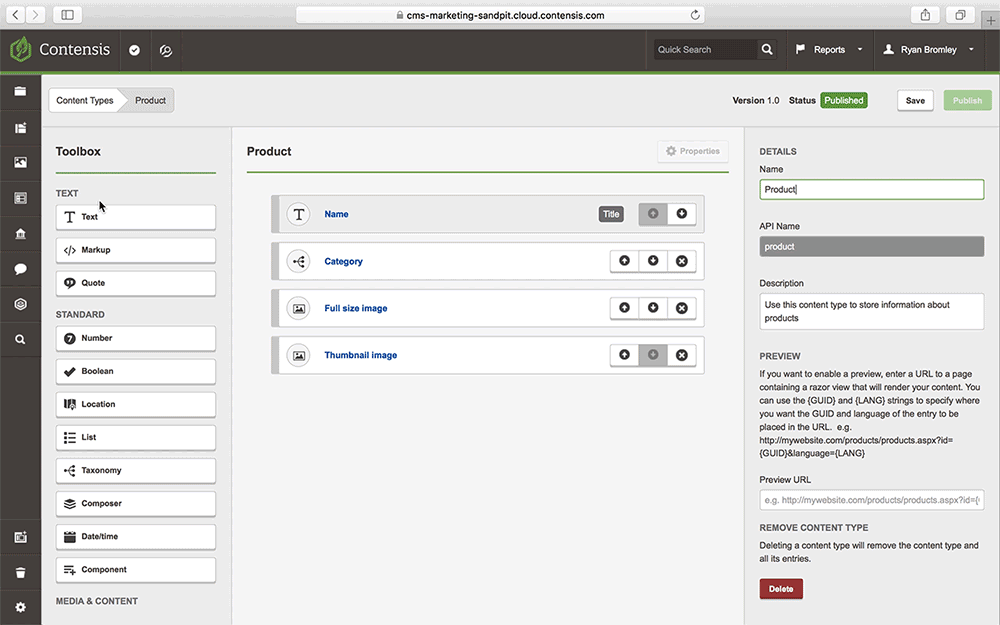Strengthen your brand with content guidelines
Content guidelines provide an easy way for content strategists to enforce voice and tone when authors create content.
We saw in a previous blog how developers and content strategists can use the validation settings in the content types builder to make sure that authors enter content in a format that will display properly wherever it's published.
While validation settings are a great way define how content is formatted, they don't provide authors with any information on how that content should look, sound, or feel.
That's where content guidelines come in.
Content guidelines are editable pieces of help text that you can add to fields when you build a content type. When an author uses that content type to create a new entry the content guideline will appear as they begin to enter content into the field. You can add content guidelines to any field – including composers and components.
While you can provide any information you like in your content guidelines, they are a great opportunity to remind authors of the voice and tone they should be using in the specific context in which that field will be used.
Say for instance, that you create a content type to store information about your products that you'll display on your website and in your mobile app.
The content type may have the following fields:
- name
- category
- full size image
- thumbnail image
- social media title
- social media description
- meta description for use on search engines
- long description for use on the individual product page
- short description for use on the product listing page
If your company has a comprehensive voice and tone guide, each use will probably require a different tone. You can use content guidelines to remind authors of the tone they should use when filling in the different fields. You can even add content guidelines to image fields to make sure your authors abide by your branding guidelines.
Let's take look at how you set this up.
Step one

Open an existing content type or create a new one. I've created a new content type called Product. In the content type builder select an existing field or add one. In this case I'm going to create a new field called "Social media title".
Step two
Click on the Editor tab to bring up the editor settings. These settings change how the field appears to an author when they create an entry.

At the bottom of the panel you'll find a text box labelled Content guidelines. Enter the guidance that you want to accompany the field into this box. You can enter as much text as you like here, but try to make it concise.
Step three
Text, Markup, Quote, Number, and Entry fields also allow you to add Placeholder text which will appear in a field until the author starts to type. You can use this to give authors a hint as to what you expect them to put in the field.

Placeholder text is really useful when used alongside content guidelines. By telling people what you expect them to put in the field you can write more concise content guidelines.
In the example above, for instance, I've already told the author that the field will be used as a title on social media. And I've set a character limit on the field. So, as a content guideline I simply say:
"Be educational and friendly. It's fine to use the shortened version of words on social media – but don't use text-speak!"
It's worth bearing in mind that content guidelines are best used to provide authors with a bit of help with the look or feel of the content they are creating. By choosing the right field editor and using validation settings you can sometimes cut down your content guidelines or do away with the need for them altogether.
Crafting helpful guidelines
That's all there is to it. To get the most out of content guidelines it's important that your content is broken up logically and your organisation has a comprehensive guide on how you use voice and tone. By having a clear idea of how your organisation's tone changes in different scenarios you'll be able to craft really helpful guidelines that will help authors create authoritative and consistent content that will strengthen your organisation’s brand identity and credibility.

